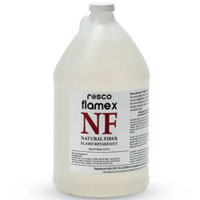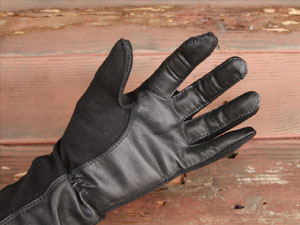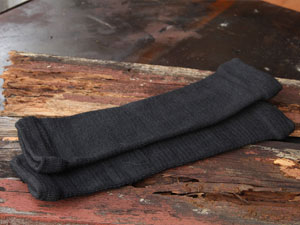There's a lot of debate among the community about what is acceptable clothing.
Let's start with what you should avoid.
- Synthetics such as polyester or nylon. These materials can light on fire and melt. Melting plastic on your skin is like candle wax, but 10 times worse.
- Clothing that restricts your movement and prevents you from performing safely.
- Clothing that is loose and could easily get caught on your fire tool
- Flammable accessories like feather boas or poofy wigs.
- Anything else. It just seems like a bad idea, because it probably is
The generally preferred clothing is natural fibers such as cotton, wool, silk and letter. Well, these fibers may burn, they will not melt. It's a lot easier to deal with a little bit of charred fabric that melted plastic goo. Keep in mind that thicker fabric is harder to light and thinner goes up easier.
Another thing to keep in mind is that sometimes less clothing is better than more. Skin is not flammable, and will not light up unless fuel is transferred to it. The best way to keep from lighting yourself on fire is to make sure that you spin off any extra fuel on your props before you light them on fire. Almost all clothing light ups are from fuel transfer. Even the most fuel resistant fabrics will light on fire if you transfer fuel to them. Luckily, this is usually not an issue and can usually just be brushed out.
There are other special heat resistant fabrics such as Kevlar or Nomex that can be used to make clothing out of. While, these materials are great for firefighters, they can be overkill for most fire performers. However, they are great for certain accessories such as Nomex gloves and sleeves, which we sell. If you have access to clothing made from these materials, by all means use them.
Duvetyn is a favorite fabric for fire performers to make costumes out of. This is a 100% cotton theatrical fabric that has been treated with a fireproofing chemical. While, this is a good fabric to make costumes out of, some people can have a skin reaction to the fireproofing chemicals in the fabric. It should also be noted that if the costume is washed, the fireproofing treatment will be lost and will have to be reapplied. Our fire blankets are made from the heavyweight 16oz version of this fabric.
There are flame retardants that can be sprayed on fabric to make it more flame retardant. However, most of these chemicals are not specifically designed for clothing and may be a skin irritant to some people. One product typically used as Rosco's Flamex.

It is common to wet down hair to make it less flammable. Hair that is tied back or braided is much less likely to catch on fire, then hair that is loose and flowing and therefore full of oxygen.
Using a little common sense will get you a long way when it comes to what to wear.



